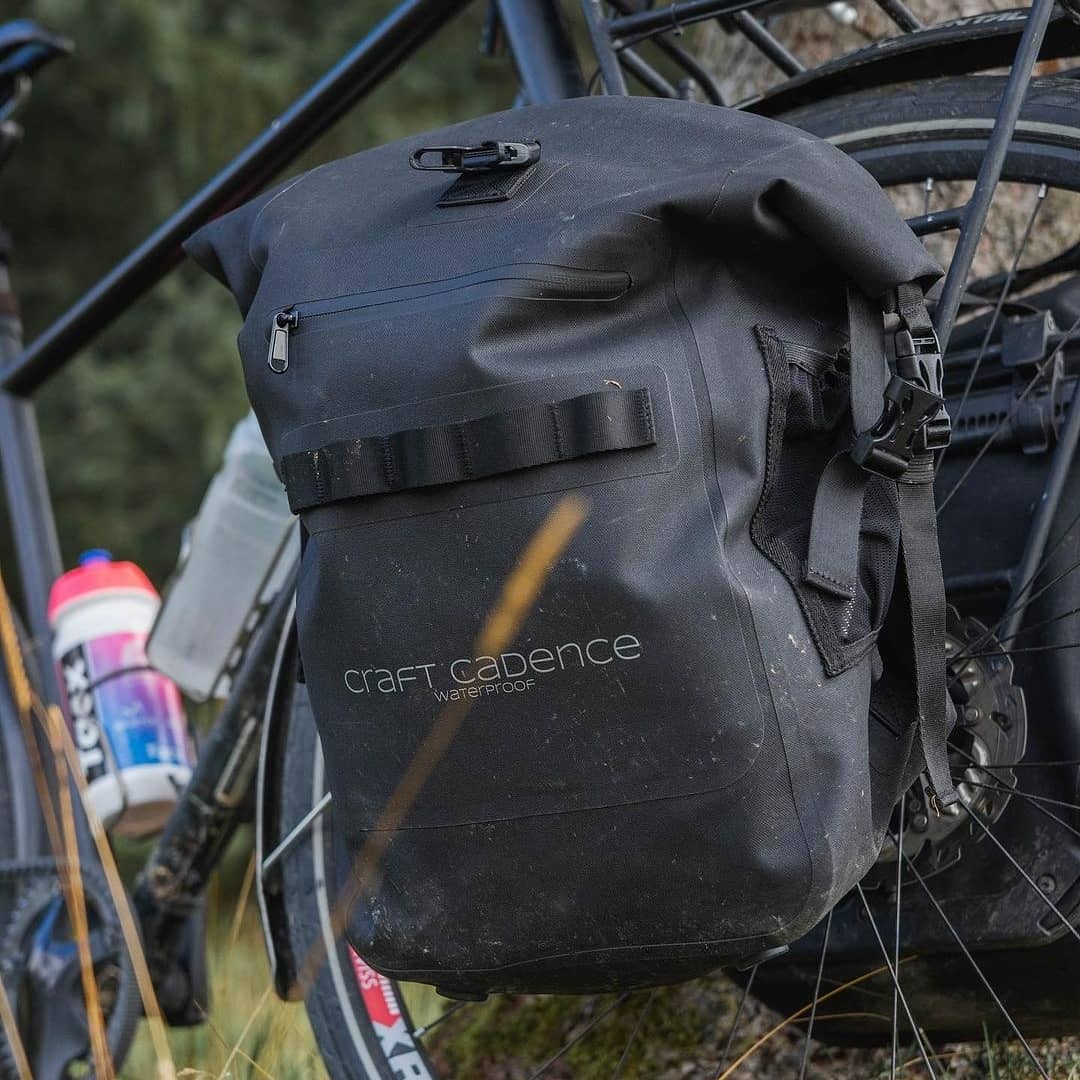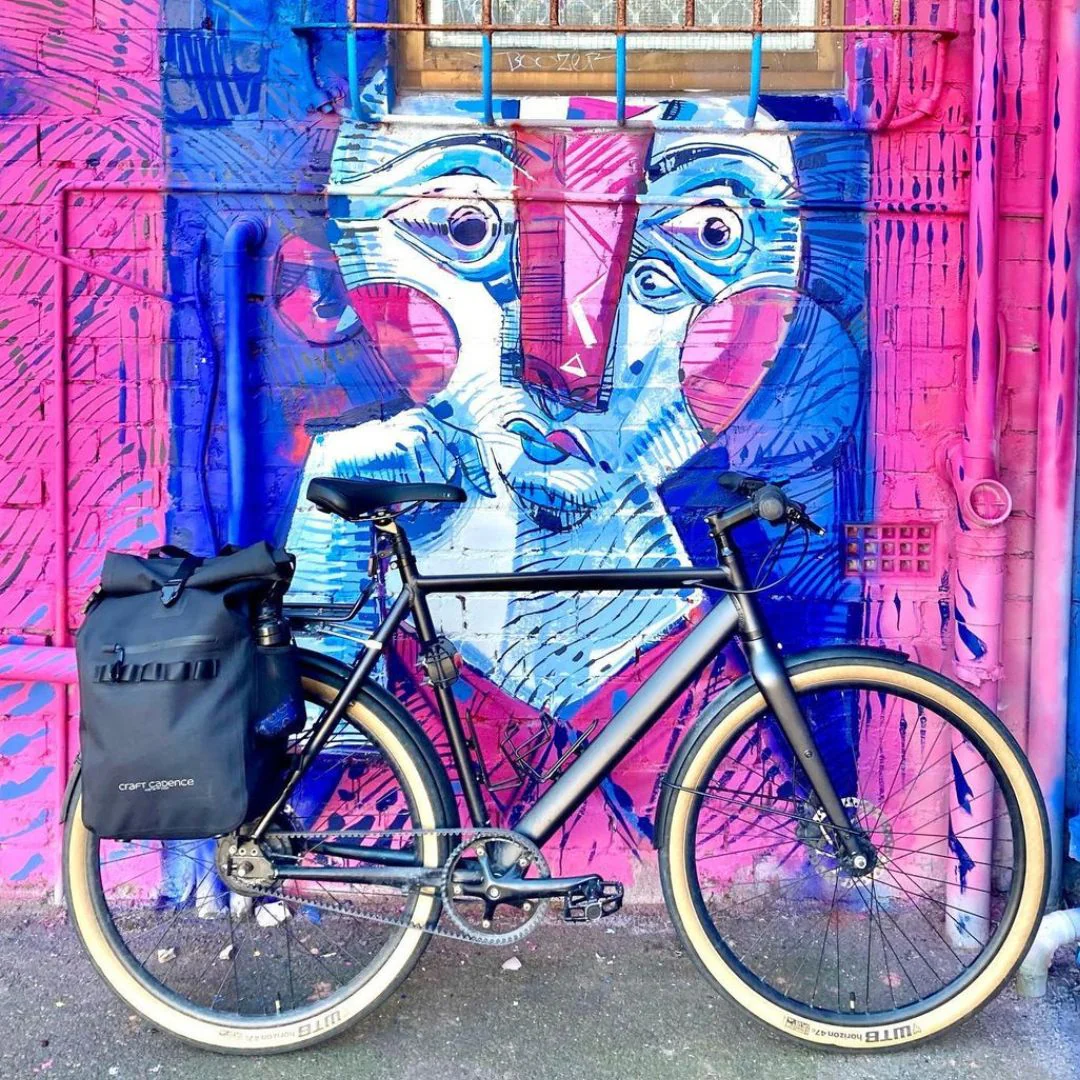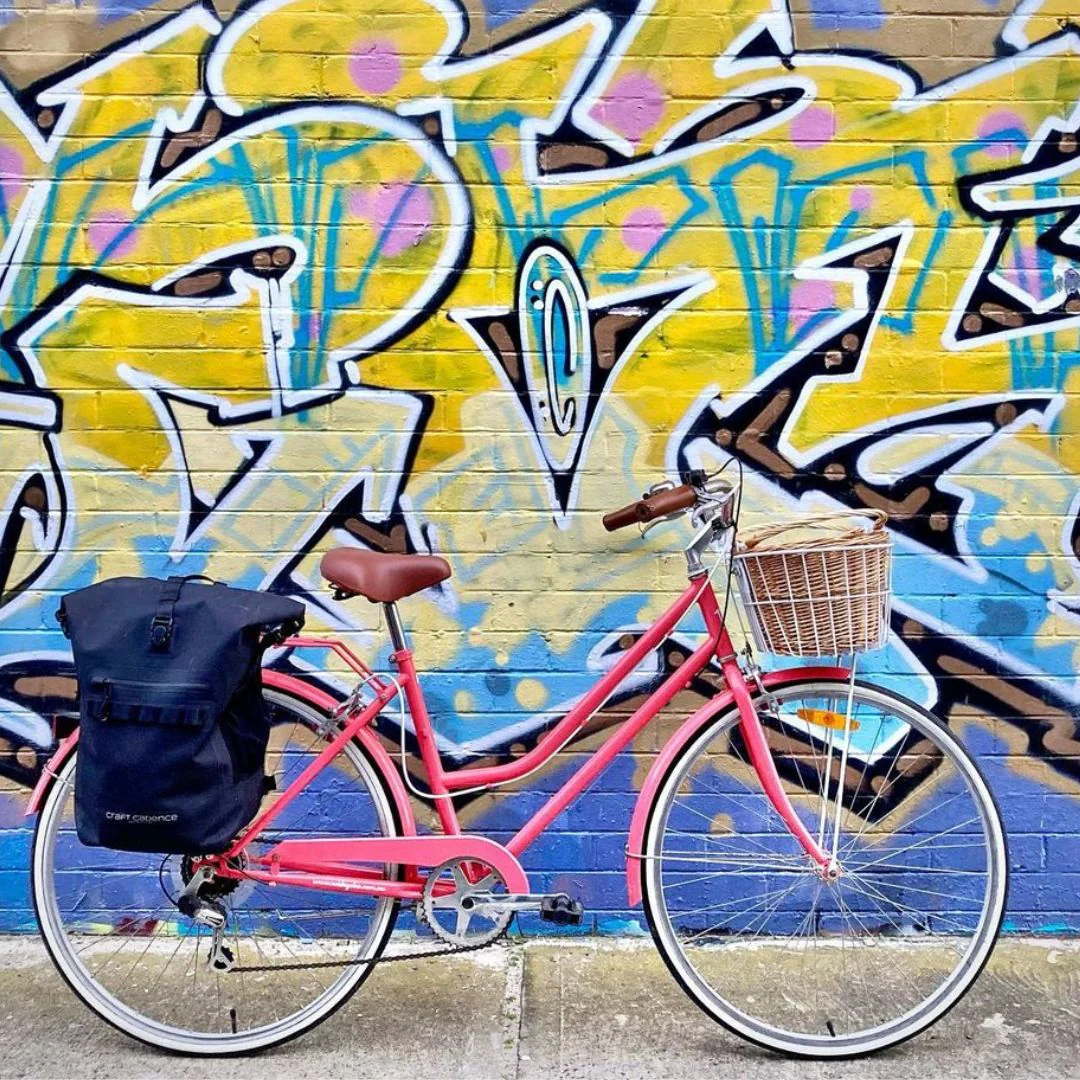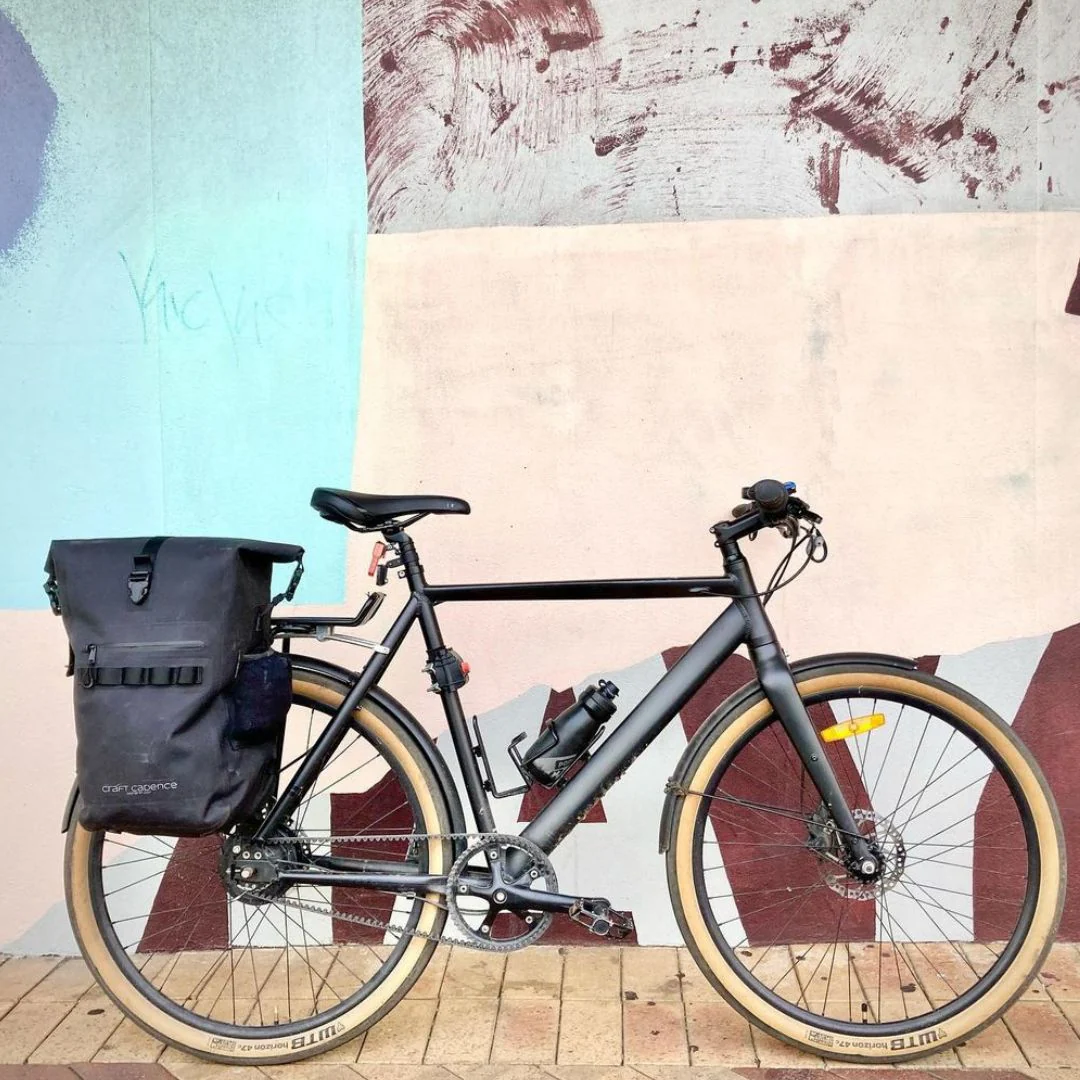Last updated: 28th July 2025
For cyclists who seamlessly transition between riding and walking, convertible backpack panniers represent the perfect fusion of functionality and versatility. These innovative bags eliminate the need to carry multiple pieces of luggage by transforming from secure bike panniers to comfortable backpacks in seconds.
Whether you’re a daily commuter, weekend adventurer, or urban explorer, the right convertible pannier backpack can revolutionize how you carry your essentials. In this comprehensive guide, we’ll explore the best options available in 2025, helping you find the perfect companion for your cycling adventures.
What Makes a Great Convertible Backpack Pannier?
The best convertible backpack panniers excel in both modes of operation. They feature secure pannier attachment systems, comfortable backpack straps, weather protection, and thoughtful organization. Key considerations include:
- Dual-purpose design: Seamless transition between backpack and pannier modes
- Secure mounting: Reliable attachment systems that won’t fail mid-ride
- Weather protection: Waterproof or water-resistant construction
- Comfort: Ergonomic design when worn as a backpack
- Organization: Smart compartments for different types of gear
- Durability: Built to withstand daily use in both configurations
Top Convertible Backpack Panniers for 2025
Premium Options ($200+)
Two Wheel Gear Pannier Backpack Convertible Plus 2.0 (30L)
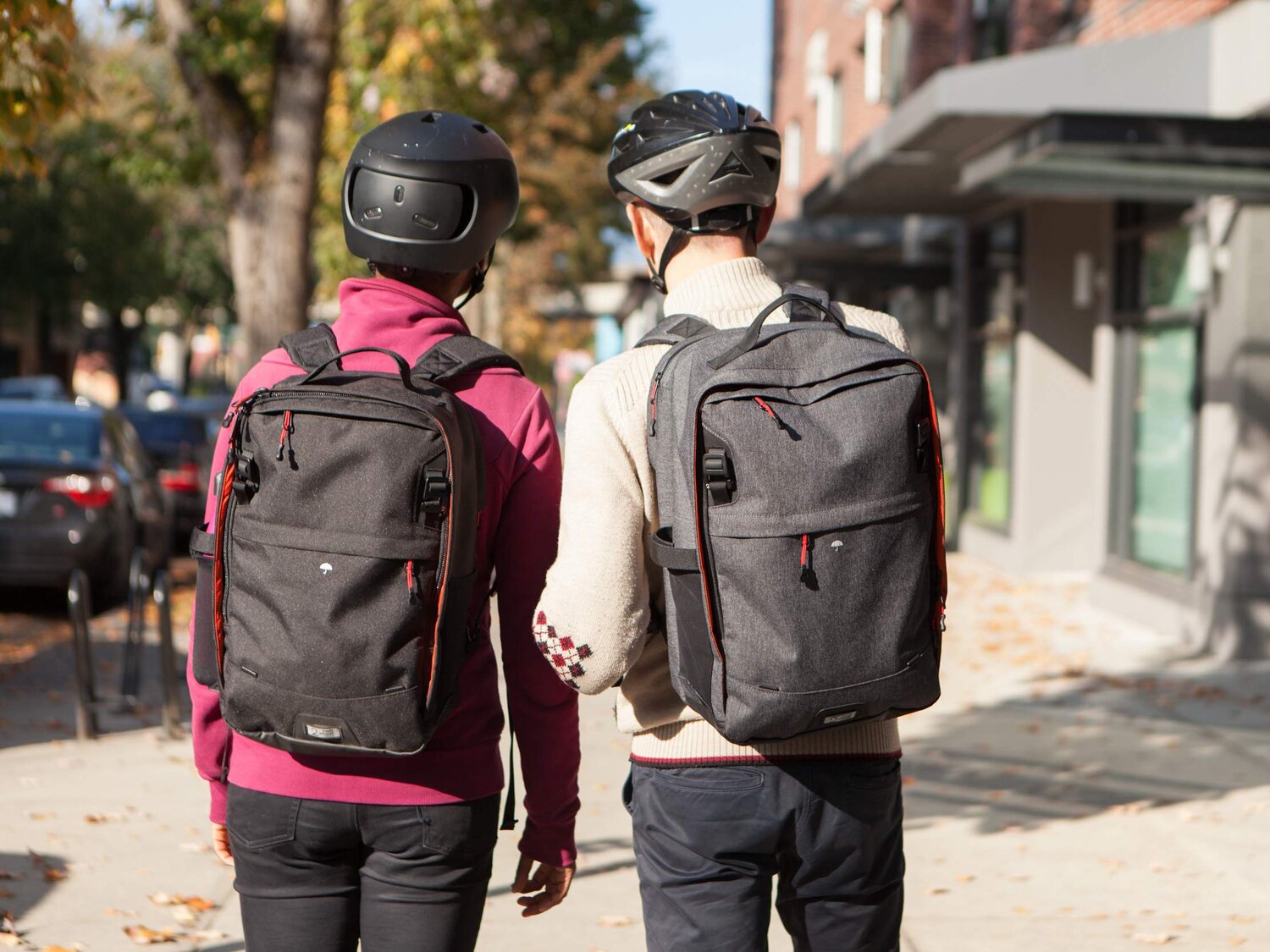
Price: From $159
Two Wheel Gear’s flagship 30L pannier offers a generous capacity perfect for daily commuting, grocery runs, or weekend adventures, with waterproof construction and a KLICKfix attachment system. The model has been recognized as “Best Bag for Commuting” by Travel + Leisure.
Pros
- Voted “Best bike pannier to hold a mobile office” by Wirecutter (NY Times)
- Hidden mounting bracket when in backpack mode
- Adjustable pannier hooks fit most rack types
- Comfortable to wear even when fully loaded
- Available in multiple colors with fluorescent rain cover included
Cons
- Light loop positioning may cause lights to sag
- Premium pricing
- Heavy at 1.44kg
- No cable port between outer pockets and interior
The Plus 2.0 series represents Two Wheel Gear’s most refined design, incorporating feedback from years of real-world testing. The bag features a padded inner pocket for laptops and is notably light and compact despite its generous capacity.
Ortlieb Vario PS Hybrid
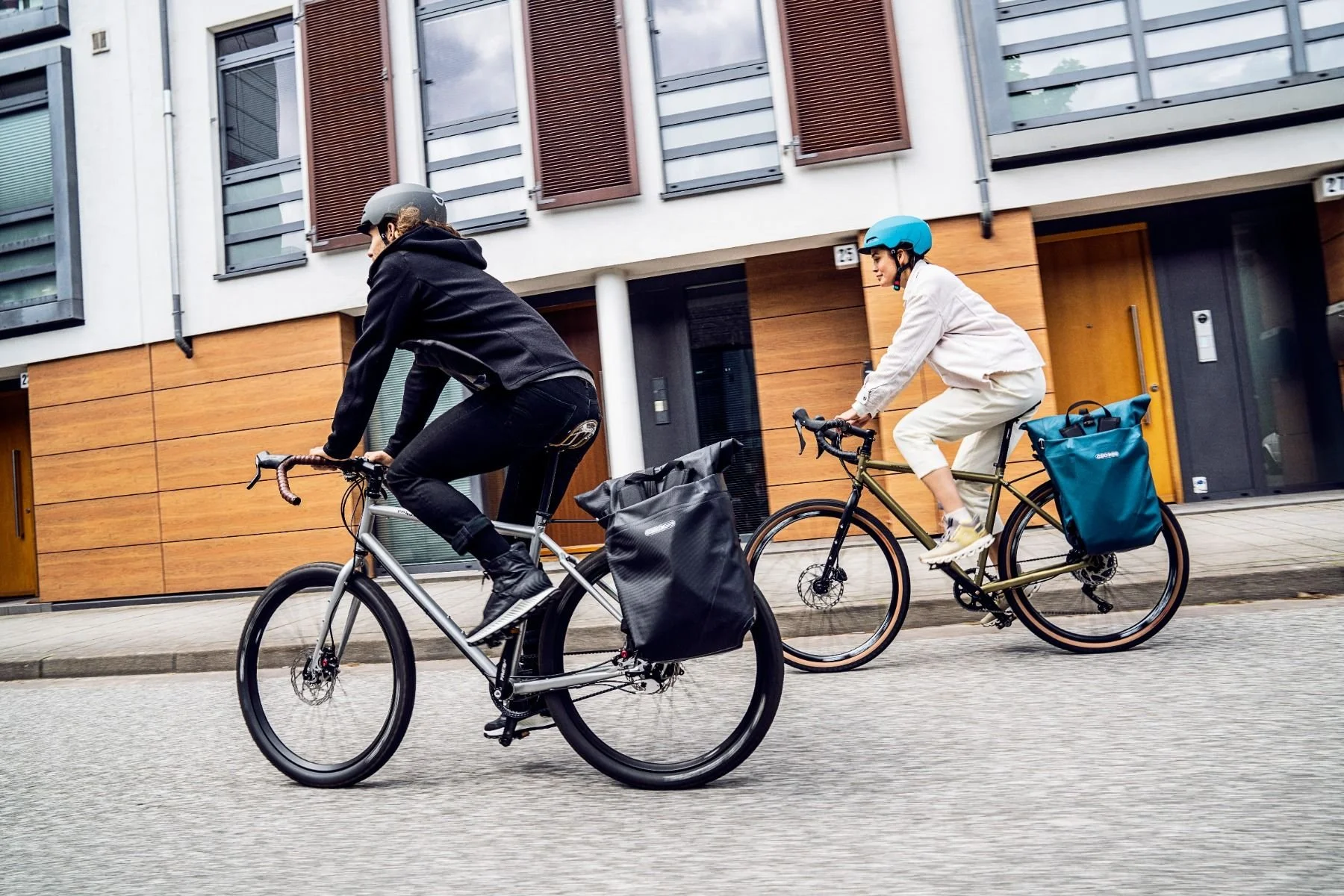
Price: From $225
Ortlieb gave the Vario a complete overhaul, with the new version called the Vario PS featuring significant updates. This German-engineered pannier maintains Ortlieb’s reputation for bulletproof waterproofing while adding convertible functionality.
Pros
- Internal sub-compartments for organization
- PVC-free and sustainably manufactured in Germany
- Ergonomically shaped and padded backpack straps
- Compatible with QL 2.1 and QL 3.1 systems
- Completely waterproof PU-coated nylon construction
Cons
- Front pocket becomes unusable in bike mode
- Expensive compared to budget options
- 9kg maximum load capacity
- Lighter at 1.2kg but still substantial
Many cyclists find the Ortlieb Vario PS to be their go-to choice for daily use, excelling as both a commuting pannier and functional backpack.
North St Bags Woodward

Price: $295
This handmade-in-USA option offers extensive customization and premium materials. Made with recycled EcoPak sailcloth and featuring a medium gray interior, it targets eco-conscious cyclists who value local craftsmanship.
Pros
- Default 9mm hooks compatible with racks up to 11mm
- Supports local manufacturing
- Handmade quality and craftsmanship
- Padded laptop section
- Extensive customization options for colors and reflective stripes
Cons
- May hang too low when used as front pannier
- Limited availability compared to mass-produced options
- Highest price point in the category
Arkel Bug

Price: From $299.99 CA
The convertible backpack straps on the Bug Pannier are a convenient bonus on a versatile bag with large overall volume and plenty of storage options. Arkel backs this product with confidence through their lifetime guarantee.
Pros
- Separate helmet and U-lock compartments
- Comfortable backpack conversion
- Transferable lifetime guarantee (no receipt needed)
- Weather-resistant for up to two hours without rain cover
- Durable Cordura fabric construction
- Spring-operated locks for secure rack attachment
Cons
- Some pockets difficult to access when fully loaded
- Rain cover sold separately for complete waterproofing
- Lacks specialized backpack comfort features for extended wear
- No dedicated laptop compartment (optional pouch available separately)
At 1.2kg with 25L capacity, the Bug offers excellent value for urban commuters who prioritize durability and company support.
Mid-Range Options ($100-200)
Craft Cadence Metro
Price: From $118
A well-balanced option that delivers solid performance at a competitive price point. The Metro features a unique “flip” mechanism for quick conversion between modes.
Pros
- Compatible with rack widths 8-18mm
- Detachable laptop sleeve included
- Competitive pricing
- Impressive waterproofing in pannier mode
- Simple, effective two-hook mounting system
- Useful outer pockets and accessory loops
Cons
- Loose flap when hooks are removed
- Reflective logo positioning issues on left side
- Not fully waterproof in backpack mode
- Three-buckle roll-top can be cumbersome
- Lower mount strap can be fiddly to adjust
The Metro strikes an excellent balance between features and affordability, making it ideal for budget-conscious cyclists who don’t want to compromise on essential functionality.
Budget-Friendly Options (Under $100)
Banjo Brothers Convertible
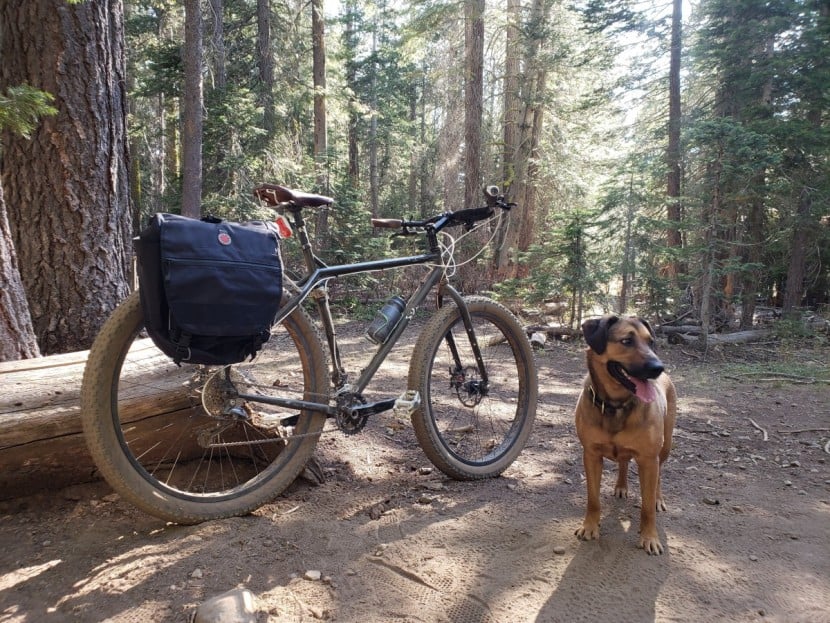
Price: From $99
This cost-effective bag offers excellent storage, as well as lots of zipped compartments, clips and straps. Despite its budget pricing, it doesn’t compromise on essential features.
Pros
- Two-year development process ensures refined design
- Excellent value proposition
- Fits 15-inch laptop plus essentials
- Ballistic nylon construction
- Quick-mounting with rubber-coated hooks
- Pannier hooks positioned for back comfort
Cons
- Not completely waterproof
- Bulky and heavy at 1.4kg
- Side buckle straps require careful tucking in pannier mode
- Potential swaying when heavily loaded
- Roll-top closure less watertight than competitors
For cyclists seeking maximum value, the Banjo Brothers Convertible delivers surprising functionality at an unbeatable price point.
Decathlon 27L Cycling Double Pannier Rack Backpack
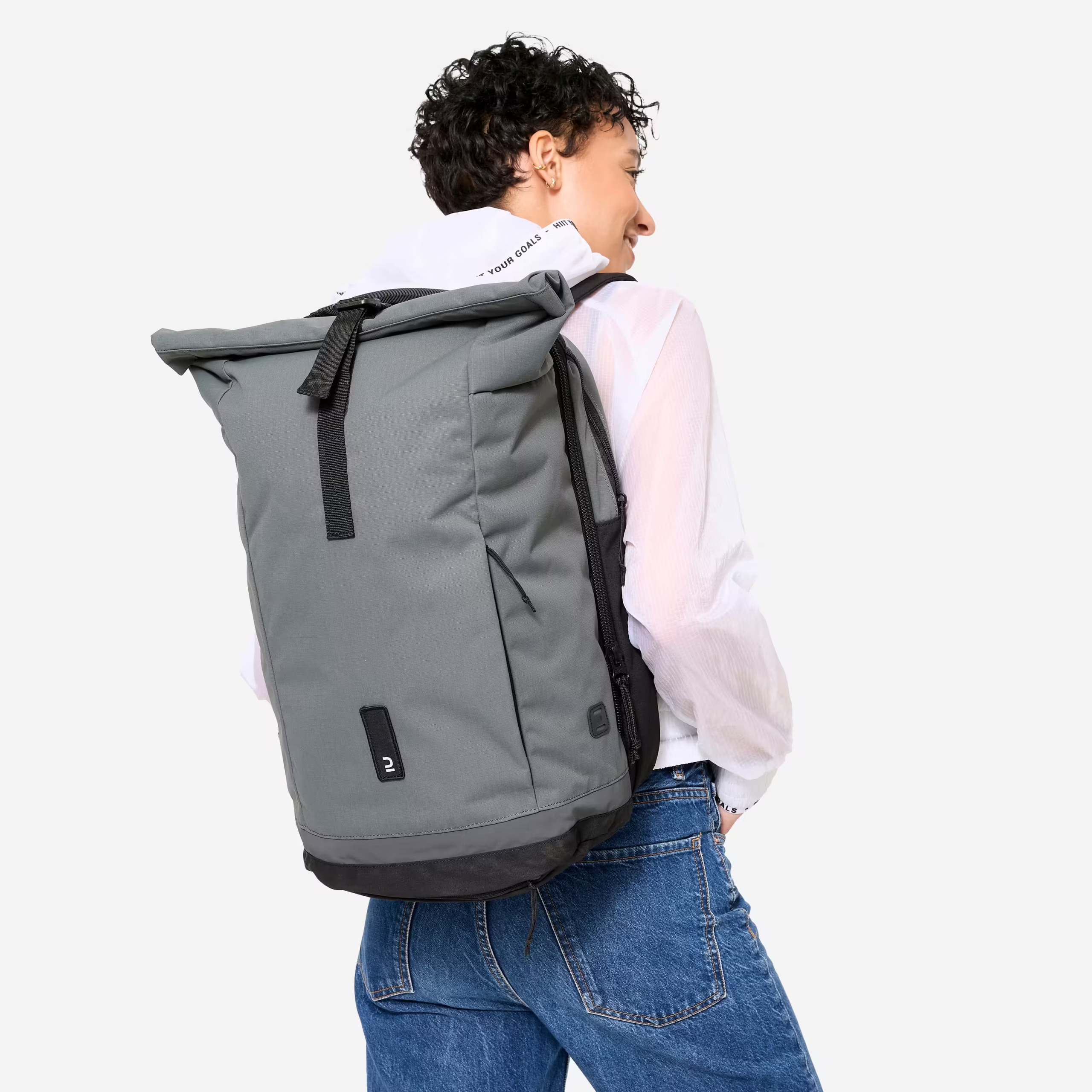
Price: Approximately £60
This Decathlon option offers 27 litres divided into two compartments: one for work items and one for other gear, with a rear compartment (10L volume) that can carry laptops up to 15″.
Pros
- Reflective elements for visibility
- Available in multiple colors
- Large zip pocket for documents
- Foam laptop protection included
- Designed for urban cyclists, it transforms effortlessly into double saddlebags for a secure, hands-free ride
- Exceptional value for money
Cons
- May lack long-term durability of premium brands
- Less refined attachment system
- Limited waterproofing
- Basic materials compared to premium options
Perfect for comfortably carrying work items, laptop, etc., on your commute by foot or on your bike, in any weather, making it an excellent entry-level option.
Specialized Option
Deuter Xberg 25
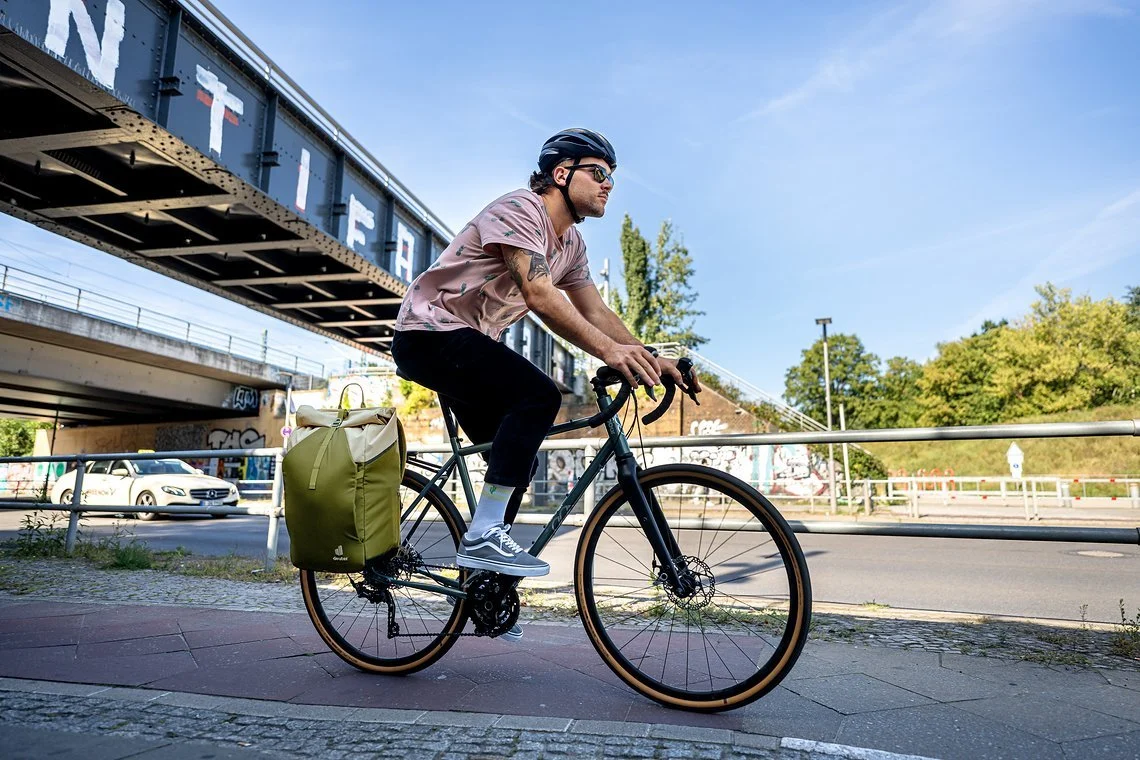
Price: Approximately $266+
This German-engineered bag offers a unique approach with a fold-up back panel that converts between ergonomic backpack and BagFix pannier mount. Designed primarily as a backpack with pannier capability.
Pros
- Made from recycled polyamide
- Removable laptop compartment
- Roll-top opening with expandable storage
- Comfortable Contact back system with ventilation
- Excellent German build quality and materials
- Simple folding mechanism for quick conversion
Cons
- BagFix system less universal than standard hooks
Ideal for urban commuters who prioritize backpack comfort but need occasional pannier functionality for longer rides or grocery runs.
DIY Solutions: Converting Regular Backpacks
For the budget-conscious or DIY enthusiast, several systems can convert regular backpacks into panniers:
Universal Attachment Systems
Arkel Universal Attachment System: Adjustable aluminum rails and hooks that can be sewn onto most backpacks. Offers sturdy, secure mounting but requires modification skills.
RIXEN & KAUL Klickfix: Adaptable pannier hooks with robust construction. Known for reliability and broad compatibility with various mounting accessories.
Ortlieb QL Universal System: While designed for Ortlieb products, creative cyclists have successfully retrofitted these onto other backpacks for their quick-locking capability.
DIY Considerations
Pros of Converting:
- Cost-effective if you already own a suitable backpack
- Complete customization to your specific needs
- Satisfying DIY project experience
- Can add protective flaps to prevent road grime transfer
Cons of Converting:
- Stability and safety concerns, especially with spokes
- Strap management challenges
- No warranty or professional support
- Time investment for proper execution
- May compromise backpack’s original design
Choosing the Right Convertible Pannier Backpack
For Daily Commuters
Prioritize comfort in backpack mode, laptop protection, and quick conversion. The Ortlieb Vario PS or Two Wheel Gear Plus 2.0 excel here, offering professional appearance and reliable weather protection.
For Budget-Conscious Cyclists
The Decathlon 27L offers unbeatable value for basic commuting needs, while the Banjo Brothers Convertible provides more features at a still-affordable price point.
For Adventure Cyclists
Consider the NorthSt Woodward for its durability and customization, or the Arkel Bug for its lifetime guarantee and robust construction.
For Urban Explorers
The Craft Cadence Metro strikes an excellent balance between features, price, and versatility for mixed urban use.
Installation and Safety Tips
Proper Mounting
- Ensure hooks are fully engaged and locked
- Check weight distribution to avoid bike handling issues
- Verify heel clearance during pedaling
- Test attachment security before each ride
Backpack Mode Conversion
- Tuck all straps and buckles securely when in pannier mode
- Ensure mounting hardware doesn’t create pressure points
- Clean road grime from bag exterior before backpack conversion
- Check zipper and pocket accessibility in both modes
Maintenance
- Regular cleaning of attachment points prevents corrosion
- Lubricate moving parts according to manufacturer recommendations
- Inspect straps and mounting hardware for wear
- Store in dry conditions to prevent mold and material degradation
The Future of Convertible Panniers
The convertible pannier market continues evolving with innovations in materials, attachment systems, and smart features. The unique category of backpack-style or convertible panniers is becoming more attractive to folks who spend just as much time carrying their gear off the bike as they do on the bike.
Emerging trends include:
- Integrated charging ports and cable management
- Smart attachment systems with one-handed operation
- Advanced weatherproof materials and construction
- Modular designs for customizable capacity
- Improved ergonomics for extended backpack wear

